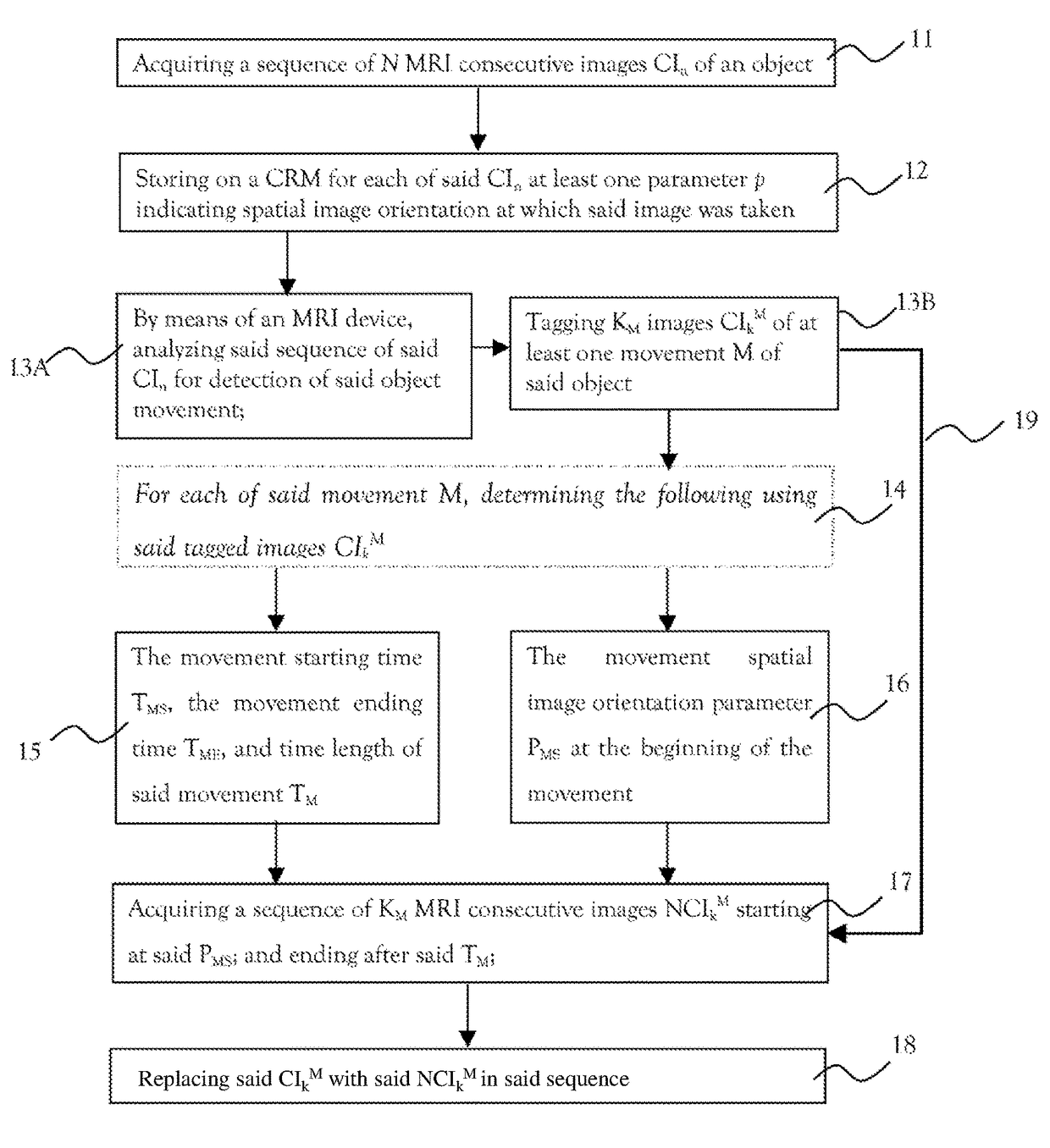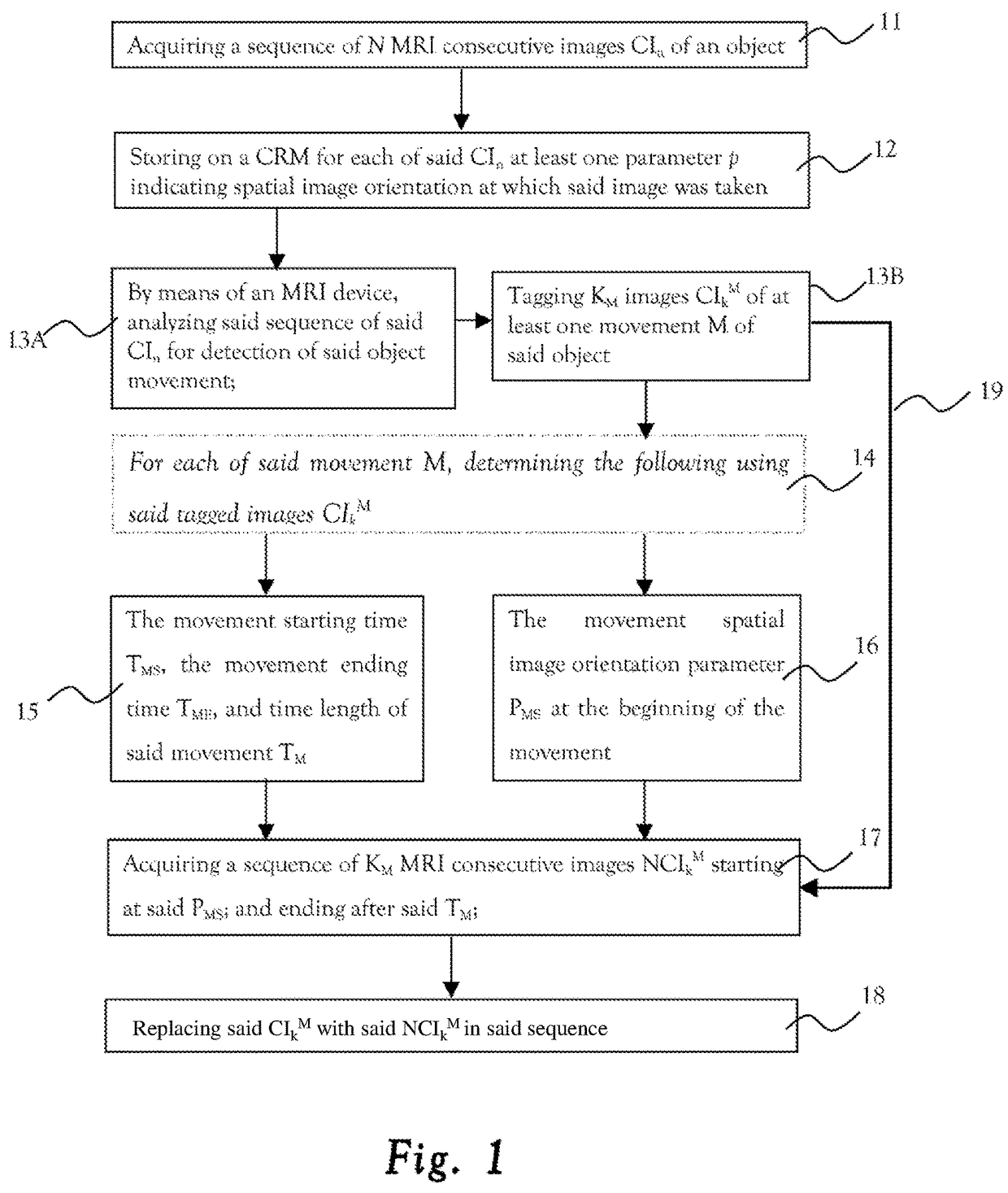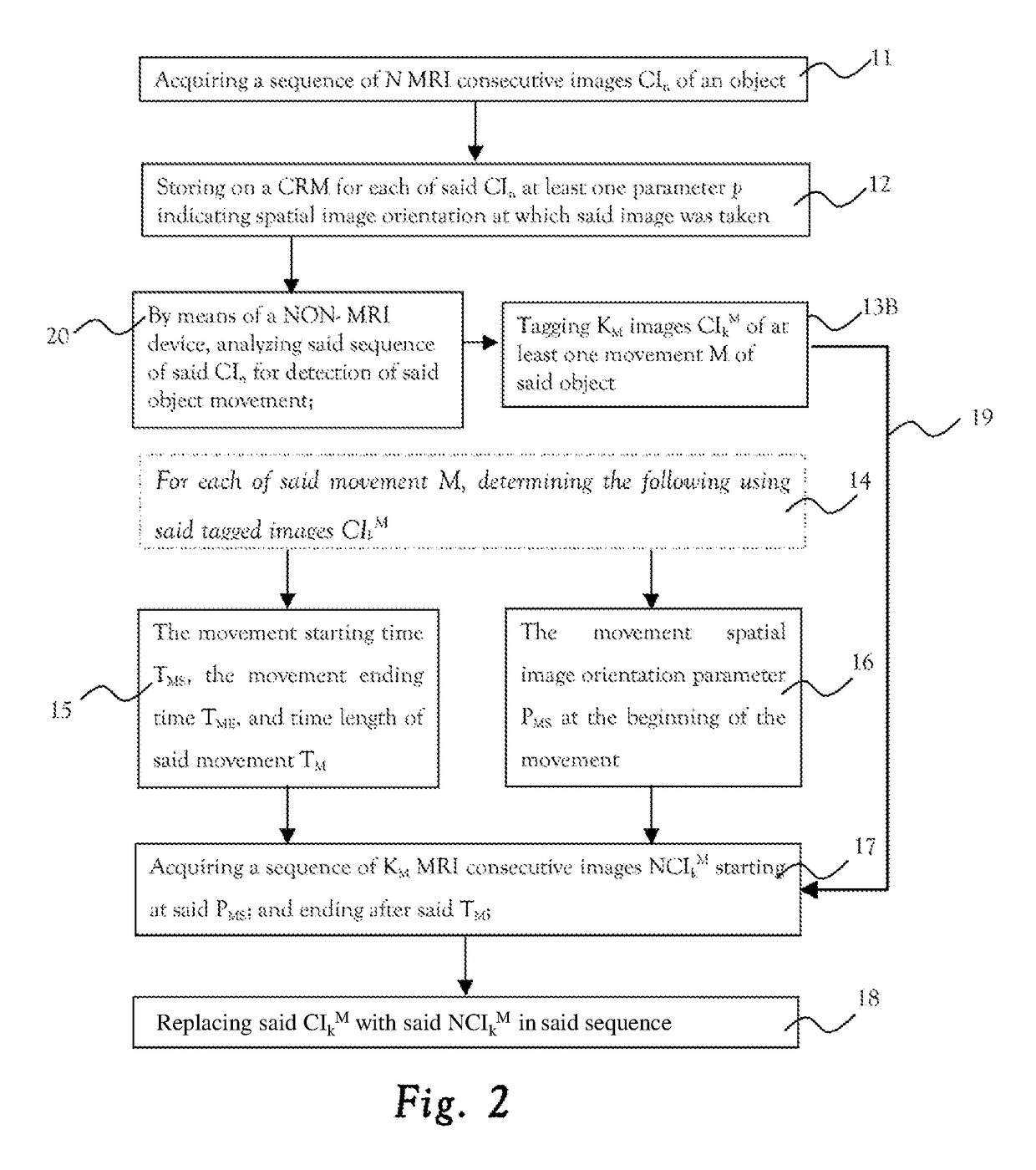MRI system with means to eliminate object movement whilst acquiring its image
a technology of object movement and mri imaging, which is applied in the field of reducing the effect of object movement along mri imaging, can solve the problems of ineffective orthogonal direction motion, limited use of head restraints, and insufficient technique, so as to reduce object movement, enhance the quality of mri images, and avoid object motion artifacts
- Summary
- Abstract
- Description
- Claims
- Application Information
AI Technical Summary
Benefits of technology
Problems solved by technology
Method used
Image
Examples
Embodiment Construction
[0027]The following description is provided so as to enable any person skilled in the art to make use of the invention and sets forth examples contemplated by the inventor of carrying out this invention. Various modifications, however, will remain apparent to those skilled in the art, since the generic principles of the present invention have been defined specifically. Also, it is to be understood that the phraseology and terminology employed herein is for the purpose of description and should not be regarded as limiting.
[0028]According to one embodiment of the present invention, a first method for reducing the effect of object movements along MRI imaging is disclosed. Reference is now made to FIG. 1, presenting an embodiment, which is based on an MRI motion detector (See step 13A), of such a method which inter alia comprises the following steps: (a) acquiring a sequence of N MRI consecutive images CIn of an object (11); (b) storing on a computer readable medium (CRM) for each of sa...
PUM
 Login to View More
Login to View More Abstract
Description
Claims
Application Information
 Login to View More
Login to View More - R&D
- Intellectual Property
- Life Sciences
- Materials
- Tech Scout
- Unparalleled Data Quality
- Higher Quality Content
- 60% Fewer Hallucinations
Browse by: Latest US Patents, China's latest patents, Technical Efficacy Thesaurus, Application Domain, Technology Topic, Popular Technical Reports.
© 2025 PatSnap. All rights reserved.Legal|Privacy policy|Modern Slavery Act Transparency Statement|Sitemap|About US| Contact US: help@patsnap.com



